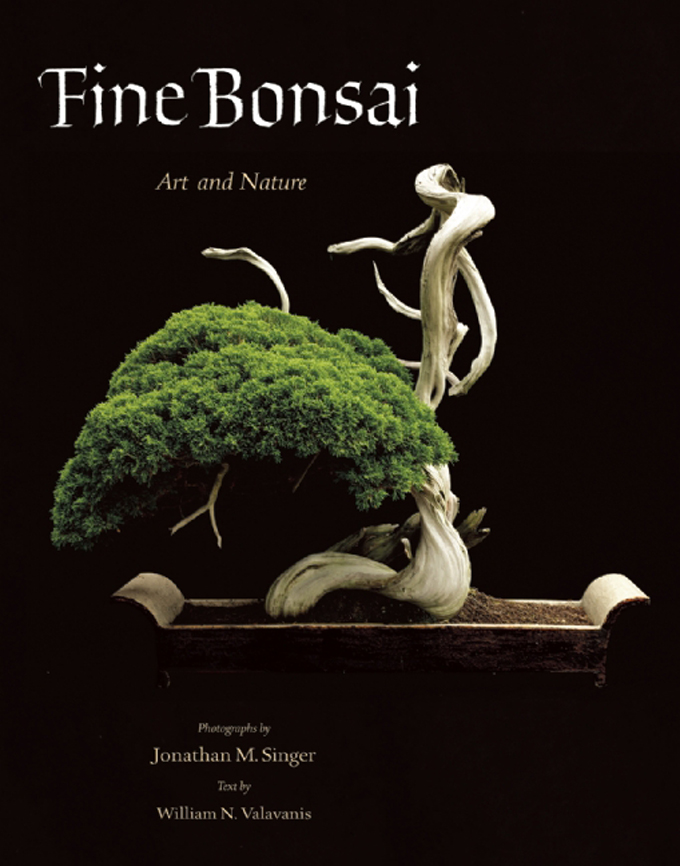 Everything about this famous Sargent juniper (Juniperus chinensis var. sargentii) seems to be flowing, with its shari that looks like melting wax and its gracefully descending foliage. The tree resides at Kunio Kobayashi’s Shunka-en Bonsai Museum in Tokyo. It won the Prime Minister Award at the 1998 Taikan-ten. Its height is 26″ (66 cm) and its estimated age is 200 years. The photo is from Fine Bonsai, Art and Nature.
Everything about this famous Sargent juniper (Juniperus chinensis var. sargentii) seems to be flowing, with its shari that looks like melting wax and its gracefully descending foliage. The tree resides at Kunio Kobayashi’s Shunka-en Bonsai Museum in Tokyo. It won the Prime Minister Award at the 1998 Taikan-ten. Its height is 26″ (66 cm) and its estimated age is 200 years. The photo is from Fine Bonsai, Art and Nature.
Every morning before getting started with my recent bonsai lessons with Michael Hagedorn, we would spend a little time looking through Kokufu albums. The exercise was illuminating and I wanted to make it part of my daily routine, but I don’t have any Kokufu albums here. My solution is to keep a copy of Fine Bonsai open on a stand next to my desk. The book is huge and full of remarkable bonsai (there are 298 full-page shots of individual trees and each photo is 14″ x 10.5″). Even the trees that may not be considered world-class are worth lingering over (the trees range from some of the best from around the world, to some that are remarkable for how unusual they are).
In addition to its size and range of trees, perhaps what most sets Fine Bonsai apart is that each photo is a unique take on each tree. In other words, no matter how many photos you’ve seen of a particular tree, the photo in Fine Bonsai will present a fresh view of that tree.
Shimpaku by any other name. All three bonsai shown here are Sargents junipers (Juniperus chinensis var. sargentii). In Japan and in the world bonsai community, Sargents are commonly called Shimpaku juniper.
 Two Sargent junipers (aka Shimpaku) and some friends growing on a most distinctive Ibi River rock. Like the tree above, this remarkable planting belongs to Kunio Kobayashi and resides at the Shunka-en Bonsai Museum.
Two Sargent junipers (aka Shimpaku) and some friends growing on a most distinctive Ibi River rock. Like the tree above, this remarkable planting belongs to Kunio Kobayashi and resides at the Shunka-en Bonsai Museum.
 The cover tree is from Seiji Morimae’s S-cube Uchiku-Tei Bonsai Garden Hanyu Japan. The highly unusual pot was handmade by Adachi Choka.
The cover tree is from Seiji Morimae’s S-cube Uchiku-Tei Bonsai Garden Hanyu Japan. The highly unusual pot was handmade by Adachi Choka.